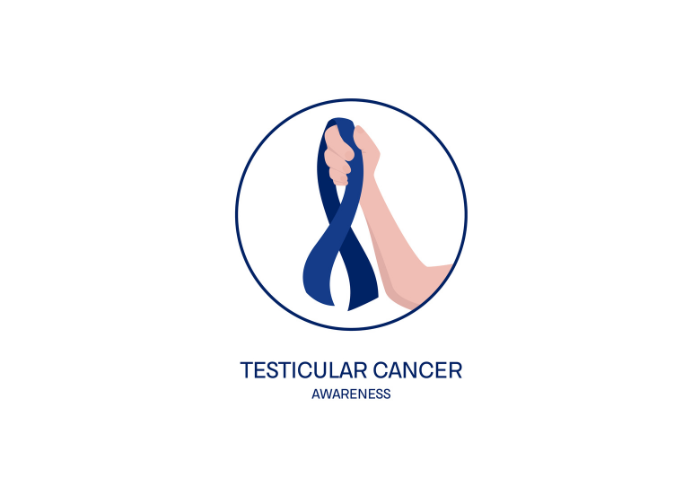Introduction
This November 2021, we will be talking about brain tumors during the Brain Cancer Awareness Week, a topic still relatively unknown to the public. Yet, brain tumors, even though not very common in the general population, represent the second most common cause of cancer in children.
There are several different types of brain tumors that will manifest themselves clinically depending on the location of the tumor in the brain, the type of tumor and its rate of progression.
But before discussing the tumors themselves, it is important to distinguish between so-called primary tumors which originate directly from brain tissue and so-called secondary tumors which are in fact metastatic lesions of tumors not originating in brain tissue (such as lung cancer, breast cancer, melanoma, …).
Types of brain tumors
More than half of all brain tumors are represented by glial tumors also called gliomas. Glial cells are important cells in the brain tissue that surround the nerve cells (neurons) and provide them with nutrients and eliminate their waste products. They act on the local chemical environment. There are different types of glial cells, each of which has a very specific action in the functioning of the brain: astrocytes, microglia, oligendendrocytes, ependymal cells.
As glial cells correspond to a diverse family of cells, various lesions such as astrocytomas, ependymomas, oligodendrogliomas or glioblastomas will also be found within the glial tumors.
Besides glial tumors, other tumors such as meningiomas, which originate in the meninges, brain lymphomas and adenomas (e.g., of the pituitary gland) can develop.
Benign vs. malignant tumors
It is important to keep in mind that most brain lesions are benign (70%) but some of them, such as gliomas, can evolve over time into malignant lesions that are much more aggressive and therefore difficult to treat.
When we talk about brain cancer, we are talking about malignant tumor lesions, with a more reserved prognosis. Specialists may in some cases use a grade classification to indicate the aggressiveness of the brain lesions. That is why we speak of grade I, II, III or IV lesions. Grade IV corresponds to the most aggressive tumors (glioblastoma multiforme). Glioblastoma is the most frequently encountered malignant tumor (about 15% of all brain tumors and 59% of all malignant lesions).
Treatments
Depending on the type of tumor found in the patient, a broad range of treatments is now available to specialists, ranging from surgery to the most recent radiotherapy techniques, including chemotherapy and immunotherapy.
Surgery: surgery or rather neurosurgery consists – as for all other tumor lesions in the body – in removing as much as possible (if not all) of the tumor tissue within the brain. The difficulty for the surgeon here is to respect the surrounding tissues which are of particular importance for the correct functioning of the brain. As one can easily understand, operating on a brain tumor is not the same as removing a lesion from the lung or liver. Intra-cerebral communication pathways must be considered to minimize the post-surgical consequences of the operation itself.
Radiotherapy: Radiotherapy has made enormous progress in the treatment of brain cancers. The physician currently has a variety of radiation treatments that will be used depending on the type of cancer, size, and location of the lesion in the brain.
- External radiation therapy: conventional radiation therapy that directs a beam of radiation directly to the lesion while avoiding irradiating surrounding tissue as much as possible (stereotactic radiation therapy). This treatment is preceded by a simulation which aims to correctly delimit the volume to be treated by means of a CT-scan or an MRI.
- Brachytherapy: this technique uses a radioactive source directly near the tumor lesion to destroy and burn the cancerous cells. This technique is also called internal radiation therapy. Unlike external radiation therapy, brachytherapy delivers much higher doses of radiation directly to the lesion itself.
- Proton therapy: this is a very recent technique that is only available in certain centers around the world. It is a method of irradiation that uses a beam of protons (nuclei of the atom) rather than rays. This technique is intended for intracranial tumors, among other things, and allows for maximum sparing of the healthy tissue around the lesion with an extreme degree of precision. This type of treatment does not apply to all lesions, and it is the radiotherapist who will decide whether to use this therapeutic method
- GammaKnife: This type of radiosurgery sends gamma ray beams directly to the brain lesion. This technique also allows for very precise delivery of radiation doses.
Chemotherapy – Targeted therapies: in addition to the chemotherapy drugs traditionally administered to patients, new molecules have appeared on the market in recent years that allow us to better target the mechanisms at the origin of cancer development. These are the famous targeted therapies that have revolutionized the therapeutic approach to cancers in general. In the context of brain cancer, depending on the type of lesion treated, the physician can count on several innovative molecules that can be administered either alone or in combination with other treatments (such as chemotherapy)
Immunotherapy: this is a very recent class of drugs that work for certain specific types of cancer and are currently being studied for brain lesions. Some results are very encouraging, especially in combination with chemotherapy or radiation therapy. Clinical trials are underway and will allow us to better understand the therapeutic impact of these new treatments in the short term.
Prognosis
As mentioned above, there is no single type of brain cancer or tumor and depending on the type of lesion, its location, and the age of the patient, the prognosis may vary. Obviously, the sooner the lesion is treated, the higher the patient’s survival rate. If we take, for example, the most aggressive lesions such as glioblastoma multiforme, the survival rate at 5 years is only 36% and at 10 years 31%. However, this figure does not consider the age and for younger patients, the survival rate at 5 years for patients aged 15 years can exceed 75%!
References
- Tamara T Lah, Metka Novak, Barbara Breznik. Brain malignancies: Glioblastoma and brain metastases. Semin Cancer Biol. 2020; 60:262-273
- Emilie Le Rhun, Matthias Preusser, Patrick Roth et al. Molecular targeted therapy of glioblastoma. Cancer Treat Rev. 2019; 80:101896
- Aaron C Tan, David M Ashley, Giselle Y López et al. Management of glioblastoma: State of the art and future directions. CA Cancer J Clin. 2020; 70(4):299-312
- Chaturia Rouse, Haley Gittleman, Quinn T. Ostrom, Carol Kruchko, Jill S. Barnholtz-Sloan, Years of potential life lost for brain and CNS tumors relative to other cancers in adults in the United States, 2010, Neuro-Oncology, Volume 18, Issue 1, January 2016, Pages 70-77, https://doi.org/10.1093/neuonc/nov249








